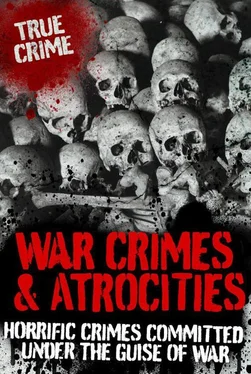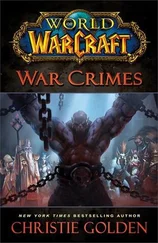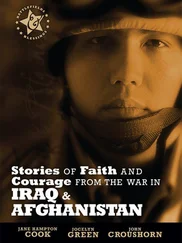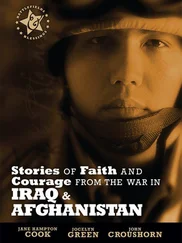It appears that is exactly what the Serbs were trying to do: eradicate the Albanians from Kosovo. Vucitrn was another site of destruction, when the Serbs massacred about 70 men after being herded into courtyards. The women and children were robbed of their money and jewellery by masked paramilitaries, while listening to the screams of their menfolk being slaughtered. The only reminders of their families at the end of the day were the bloodstains on the grass and a pair of dentures embedded in the mud.
Ultimately, many displaced persons ended up in villages to the north-east of Vucitrn, such as Bajgore, Vesekovce, Kurillove and Sllakovce, which became overcrowded with the homeless, frightened Albanians. Several witnesses reported that they had to live with as many as 100 people to a single house and that others were forced to sleep out in the open air. On their travels to Albania the refugees had been subjected to cursing and threats from the Serb soldiers.
As the group of refugees passed through Vucitrn, seeing the bodies lying at the side of the road, they decided to tie a white cloth to their tractor, to show that they wanted to surrender. The soldiers simply ignored the symbol of surrender and started shooting and shelling the occupants of the tractor. A woman used a mattress to cover her children as they drove as fast as they could away from the village. As the refugees approached a warehouse, they saw a line of soldiers on the left hand side of the road. They stopped the refugees and told them to get out of their tractors, put their hands behind their heads and then to sit down on the road. The soldiers started cursing, kicking and beating them as they walked among the petrified families. One woman was beaten just because her child was crying.
There is no accurate record of just how many Albanians were killed during the Kosovo War, as new evidence is being discovered all the time. In 2001, the existence of a mass grave at Batajnica was uncovered, after the fall of the Milosevic regime in October 2000. As many as 1,100 bodies have been exhumed from this site alone, but it is believed their has been widespread tampering with the gravesites and destruction of evidence, in an attempt to cover the true extent of the atrocity. It is certain that genocidal massacres continued throughout the war, but then came the long, hard task of trying to find out who was responsible and bring them to justice.
1983–present

Since Sudan declared independence in 1956, it has been repeatedly torn apart by civil war. Since 1983 there has been ceaseless fighting between the largely Moslem, pro-government North and largely non-Moslem rebels in the South, making it the longest uninterrupted war in the history of the world. The death toll in Sudan is higher than the combined fatalities of Bosnia, Kosovo, Afghanistan, Chechnya, Somalia and Algeria and it is estimated that as many as two million Sudanese have died as a direct result of war.
The current crisis in Darfur is a continuation of a
15-year effort by Khartoum to quash potential political challenges and to expel rebels who are demanding greater regional independence and share of the power. Since the start of the rebel-insurgency in February 2003, the government of Sudan has persisted in using a military strategy that has violated the basic principles of international humanitarian and human rights law. It has failed to differentiate between military targets and civilian populations, the results of which have been dramatic. In just one year it is believed that as many as 750,000 people have been displaced in Darfur, with as many as 110,000 fleeing across the border into Chad. The severity of the crimes committed by Sudanese government forces and allied militias, the ‘Janjaweed’, amount to war crimes and crimes against humanity. On top of the forced displacement, they have committed murder, torture, pillage and rape on hundreds of thousands of civilians. Hundreds of villages have been destroyed, usually razed to the ground by fire, and all the villagers’ personal belongings looted. Children have been abducted in large numbers and, even when they have fled their homes, the citizens are subjected to attacks by the militia as they pass through Janjaweed checkpoints dotted along the roads.
THE LATEST CONFLICT
The latest conflict in Darfur is deep-rooted, and there are key differences between the 2003–2004 conflict to prior bouts of fighting. The aggression started to have serious racial and ethnic undertones; a number of previously neutral ethnic groups became involved and it was hard for them to remain on the outside of the conflict. Basically, the hostilities were between the government and its militia and an insurgency was composed of two groups – the Sudan Liberation Army/ Movement (SLA/M) and the Justice and Equality Movement (JEM). Initially the rebels consisted of three main ethnic groups – Zaghawa, Fur and Masaalit – but smaller groups of rebels joined in following attacks by the janjaweed militia on their communities. In addition, the militia were joined by some Arab and even non-Arab tribes in their fight against the rebels.
The SLA first emerged in 2003 and were originally called the Darfur Liberation Front. Its political demands included socio-economic development for the area, an end to tribal militia, and a share of power with the central government. Khartoum refused to co-operate with the SLA, who they considered to be little better than a group of bandits. In April 2003, the SLA surprised the government by launching an attack on El Fashir, which was the capital of North Darfur. They damaged several government-owned aircraft and helicopters and looted fuel and arms depots. The SLA captured a colonel in the Sudanese air force and made him give an interview on the Arab satellite TV news station, El Gezira. This was followed by another attack on Mellit, which is the second largest town in North Darfur, where again the SLA rebels raided government stocks. The conflict continued to escalate and the government were forced to make counter-attacks on the rebels, despite a cease-fire that was put in place in late 2002.
The government attacked villages and towns in North Darfur, and these attacks consisted of heavy aerial bombardment followed by ground attacks by the Sudanese army and the Janjaweed militia. Following President Bashir’s orders to ‘annihilate the hirelings, traitors, agents and renegades’, they launched major aerial bombing in the Zaghawa areas of Darfur, which caused thousands of civilians to flee into neighbouring Chad. Those who tried to stay in their homes were later forced to leave due to heavy military ground attacks. Although their initial plan was to destroy the bases of known rebels, the attacks got out of hand, especially when the Janjaweed militia were offered an incentive. They were given the opportunity to freely loot and capture the land of communities they had coveted for so long. They certainly took advantage of the conflict to loot, not confining their attacks to SLA or JEM troops or assets, but stepped over the line by targeting undefended villages.
As the war advanced, particularly after the collapse of cease-fire talks in 2003, the Janjaweed militia grew in size. The government, far from condemning the action, encouraged the Janjaweed in their activities. In fact, the destruction of water sources, burning of crops and theft of livestock were all key elements in the government’s campaign. They realized that if they could cut off all food sources and water, that this would lead to inevitable forced displacement or even starvation – however, which under international laws this is a violation of humanitarian law.
Читать дальше













